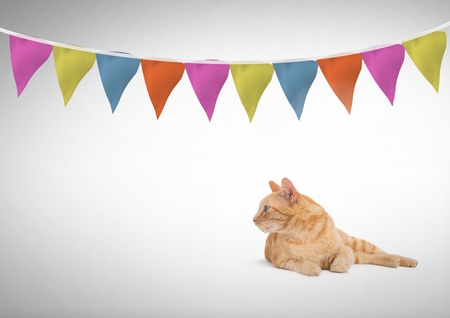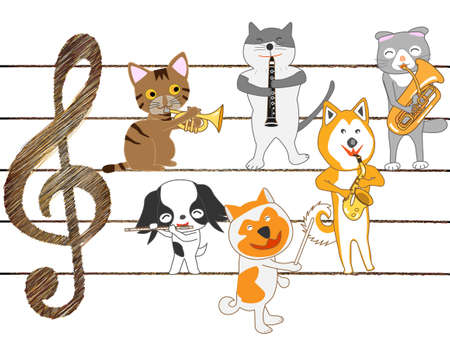1. Preparing Your Home for Multiple Pets
Hosting a celebration with multiple pets requires some preparation to ensure all animals feel safe and comfortable. Whether you have dogs, cats, or other small pets, setting up a pet-friendly environment will help minimize stress and potential conflicts.
Creating a Safe and Comfortable Space
Before the party starts, designate specific areas where pets can retreat if they feel overwhelmed. This is especially important if your pets are not used to large gatherings or new animals.
Pet-Friendly Decorations
Decorations play a big role in any celebration, but some common party items can be hazardous to pets. Here are a few tips to keep decorations safe:
| Decoration Type | Pet-Friendly Alternative |
|---|---|
| Balloons (can pop and scare pets) | Fabric banners or paper decorations |
| Candles (fire hazard) | LED flameless candles |
| Confetti (choking hazard) | Large fabric or paper streamers |
| Toxic plants (e.g., lilies, poinsettias) | Pet-safe plants like spider plants or orchids |
Setting Up Designated Areas
If you have multiple pets or guests bringing their animals, it’s helpful to create separate zones for different needs:
- Quiet Zone: A calm area where shy or anxious pets can relax away from the crowd.
- Play Area: A space with toys and room for active pets to burn off energy.
- Feeding Stations: Separate feeding spots to prevent food aggression among animals.
- Litter and Bathroom Areas: Ensure easy access to litter boxes or potty areas for all pets.
Avoiding Overcrowding
If your home has limited space, consider limiting the number of pets attending or staggering their time at the event. This helps reduce stress and prevents territorial behavior among animals.
2. Introducing Pets to Each Other Before the Party
Bringing multiple pets together for a celebration can be exciting but also a bit tricky if they havent met before. A smooth introduction is key to ensuring all animals feel comfortable and safe. Proper preparation will help prevent conflicts and create a positive environment for everyone.
Gradual Introductions: Taking It Step by Step
Pets should never meet for the first time in a high-energy party setting. Instead, introduce them gradually in a controlled environment before the event.
- Neutral Space: Choose a neutral area where none of the pets feel territorial, like a park or an unfamiliar backyard.
- Short Sessions: Keep initial meetings brief and observe their reactions.
- Leashed or Separated: Dogs should be on leashes, while cats and smaller pets may need barriers like baby gates.
- Treat-Based Encouragement: Reward calm behavior with treats and praise to create positive associations.
Recognizing Body Language: Signs of Comfort or Stress
Pets communicate through body language, so understanding their signals can help prevent conflicts. Here are some common signs to watch for:
| Body Language | Indicates Comfort | Indicates Stress or Aggression |
|---|---|---|
| Tails | Wagging loosely (dogs), upright but relaxed (cats) | Tucked tail (dogs), flicking or puffed-up tail (cats) |
| Ears | Naturally positioned, forward-facing (dogs & cats) | Pinned back, flattened against head |
| Posture | Relaxed stance, playful bows (dogs) | Tense body, stiff movements, crouching (cats & dogs) |
| Noises | Purring (cats), soft whines or happy barks (dogs) | Growling, hissing, prolonged staring |
Avoiding Potential Conflicts Between Pets
If you notice any signs of stress or aggression, take immediate action to prevent escalation.
- Create Safe Zones: Provide separate spaces where pets can retreat if they feel overwhelmed.
- Avoid Forced Interactions: Let pets approach each other at their own pace without pressure.
- Diversion Techniques: If tension arises, redirect attention with toys or treats.
- Scent Swapping: Before the meeting, exchange blankets or toys between pets so they become familiar with each others scent.
The Importance of Supervised Meetings
No matter how well two pets seem to get along, supervision is always necessary. Stay close during interactions and be ready to intervene if needed. With patience and proper introductions, your party can be a stress-free experience for all animals involved!

3. Managing Pet Personalities and Behaviors
Every pet has a unique personality, and when multiple animals are gathered in one place, managing their temperaments becomes essential for a smooth celebration. Some pets are social butterflies, while others may be shy or easily overstimulated. Understanding these differences can help prevent conflicts and ensure that all pets enjoy the event.
Understanding Different Pet Temperaments
Before the celebration, take time to assess each pet’s temperament. Here’s a quick guide to different personality types and how to handle them:
| Pet Type | Behavior Traits | Recommended Approach |
|---|---|---|
| The Social Butterfly | Loves attention, enjoys meeting new people and pets | Allow them to roam freely but monitor interactions to avoid overwhelming others. |
| The Shy or Nervous Pet | Easily startled, avoids crowds, prefers quiet areas | Create a safe space with minimal noise where they can retreat if needed. |
| The Energetic Explorer | High energy, loves to run around, may get overly excited | Provide toys, interactive activities, and short breaks to manage energy levels. |
| The Territorial Pet | Might be protective of food, toys, or space | Avoid placing them near shared resources and supervise closely during interactions. |
Providing Enrichment for a Stress-Free Event
Pets need mental and physical stimulation to stay engaged during celebrations. Consider these enrichment ideas:
- Treat Dispensing Toys: Keeps pets occupied while preventing boredom.
- Sensory Stations: Set up different areas with pet-friendly scents or textures for exploration.
- Puzzle Feeders: Slows down fast eaters and provides a fun challenge.
- Calm Music or White Noise: Helps soothe nervous pets in noisy environments.
Accommodating Nervous or Energetic Pets
If you have pets that tend to get anxious or hyperactive in social settings, take extra steps to keep them comfortable:
Nervous Pets:
- Create a designated quiet area with their favorite blanket or bed.
- Avoid sudden loud noises like fireworks or party poppers.
- If necessary, use calming sprays or diffusers with pet-safe essential oils.
Energetic Pets:
- Tire them out before the event with a long walk or play session.
- Set up an outdoor play area where they can run freely (if safe).
- If they get too excited, give them short timeouts in a calm space.
A well-managed mix of personalities ensures that all pets feel comfortable and included. By recognizing each pets needs and providing the right environment, you can create a fun and stress-free celebration for everyone involved!
4. Pet-Friendly Food and Treats
When hosting a celebration with multiple pets, providing safe and enjoyable food options is essential. Not all human foods are safe for animals, and some pets may have dietary restrictions or allergies. Planning ahead ensures that every furry guest can enjoy the party without any health risks.
Safe Snacks for Pets
Offering pet-friendly snacks is a great way to include all animals in the festivities. Here are some safe and delicious options:
| Pet Type | Safe Treats |
|---|---|
| Dogs | Carrot sticks, apple slices (without seeds), plain cooked chicken, peanut butter (xylitol-free) |
| Cats | Cooked fish, small pieces of plain chicken, catnip treats |
| Rabbits | Lettuce (not iceberg), bell peppers, small pieces of banana |
| Birds | Berries, cooked grains like quinoa, unsalted nuts |
Avoiding Food-Sharing Issues
With multiple animals at a party, it’s important to prevent them from eating food meant for others. Some pets have different dietary needs, and certain foods safe for one species may be harmful to another.
Create Designated Eating Areas
If possible, set up separate feeding zones for different types of pets. This helps prevent food-swapping and keeps pets comfortable while they eat.
Avoid Leaving Human Food Unattended
Dropped snacks or unattended plates can be tempting for curious pets. Keep food tables out of reach and ask guests to be mindful of what they leave behind.
Preventing Dietary Mishaps
The last thing you want is an emergency vet visit due to accidental ingestion of harmful food. Here are a few precautions:
- No Toxic Foods: Ensure that foods like chocolate, grapes, onions, and anything with xylitol are completely inaccessible to pets.
- Cater to Allergies: If you know certain pets have sensitivities or allergies, provide alternative treats or let their owners bring their own.
- Monitor Feeding Time: Supervise snack distribution to make sure each pet gets appropriate food without competition or aggression.
A little preparation goes a long way in making sure all pets enjoy the celebration safely. By offering appropriate treats and managing food-sharing concerns, you can create a fun and worry-free experience for both pets and their owners.
5. Supervising Pets and Ensuring Safety During the Event
Hosting a pet-friendly celebration means making sure all animals stay safe and comfortable throughout the event. With multiple pets in one space, excitement levels can rise quickly, leading to potential stress or conflicts. Proper supervision, managing their energy, and having an emergency plan are essential for a smooth gathering.
Best Practices for Monitoring Pets
Keeping an eye on your pets during the party ensures they remain calm and happy. Assign someone to watch over them if youre busy hosting. Here are some effective monitoring tips:
- Designated Pet Supervisor: Ask a trusted friend or family member to help keep an eye on the animals.
- Frequent Check-Ins: Regularly observe pets for signs of stress, discomfort, or aggression.
- Use Baby Gates or Playpens: Create separate spaces for pets that may need a break from socializing.
- Monitor Food and Drinks: Ensure pets don’t consume harmful human foods or unattended beverages.
Managing Excitement Levels
Pets can get overly excited with new guests, unfamiliar animals, and extra noise. Keeping their energy in check prevents accidents and stress-related behaviors.
| Situation | How to Manage Excitement |
|---|---|
| Pets Getting Too Hyper | Take them for a short walk or engage in playtime before the party starts. |
| Anxious or Overwhelmed Pets | Create a quiet retreat area where they can relax away from the crowd. |
| Aggressive Behavior | If tensions rise between pets, separate them immediately and allow time to cool down. |
| Barking or Excessive Vocalization | Distract them with toys or treats to redirect their focus. |
Having an Emergency Plan in Place
No matter how well you plan, unexpected situations can arise. Being prepared will help you handle emergencies smoothly.
Create an Emergency Kit
- Pet First Aid Supplies: Bandages, antiseptic wipes, and tweezers for minor injuries.
- ID Tags and Microchips: Make sure all pets have up-to-date identification in case they get lost.
- A List of Emergency Contacts: Have your vet’s phone number handy in case of medical issues.
- A Transport Carrier or Leash: In case you need to move a pet quickly to safety.
Create a Safe Exit Strategy
If a situation escalates—such as a fight between animals or an injury—know where you can take the pet to calm down or seek medical attention. Keep exits clear so that you can remove a stressed animal if necessary.


